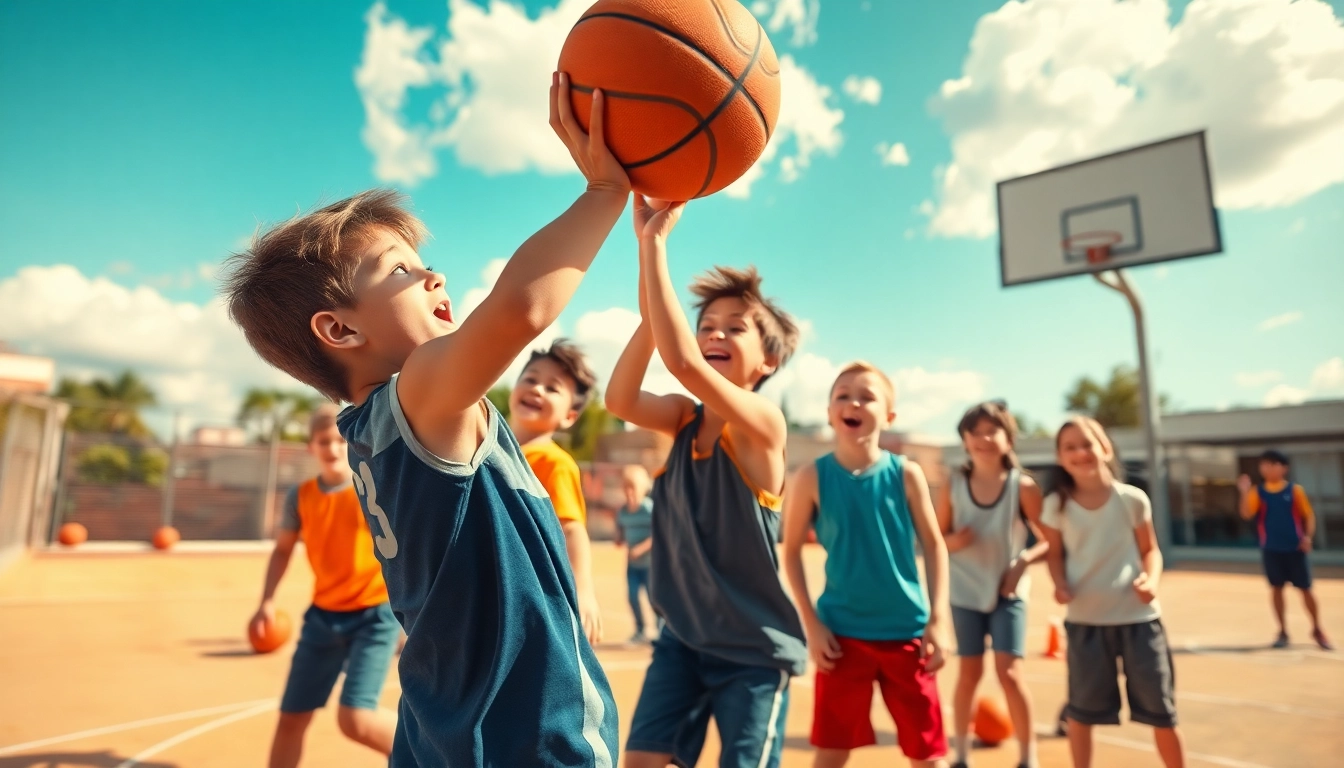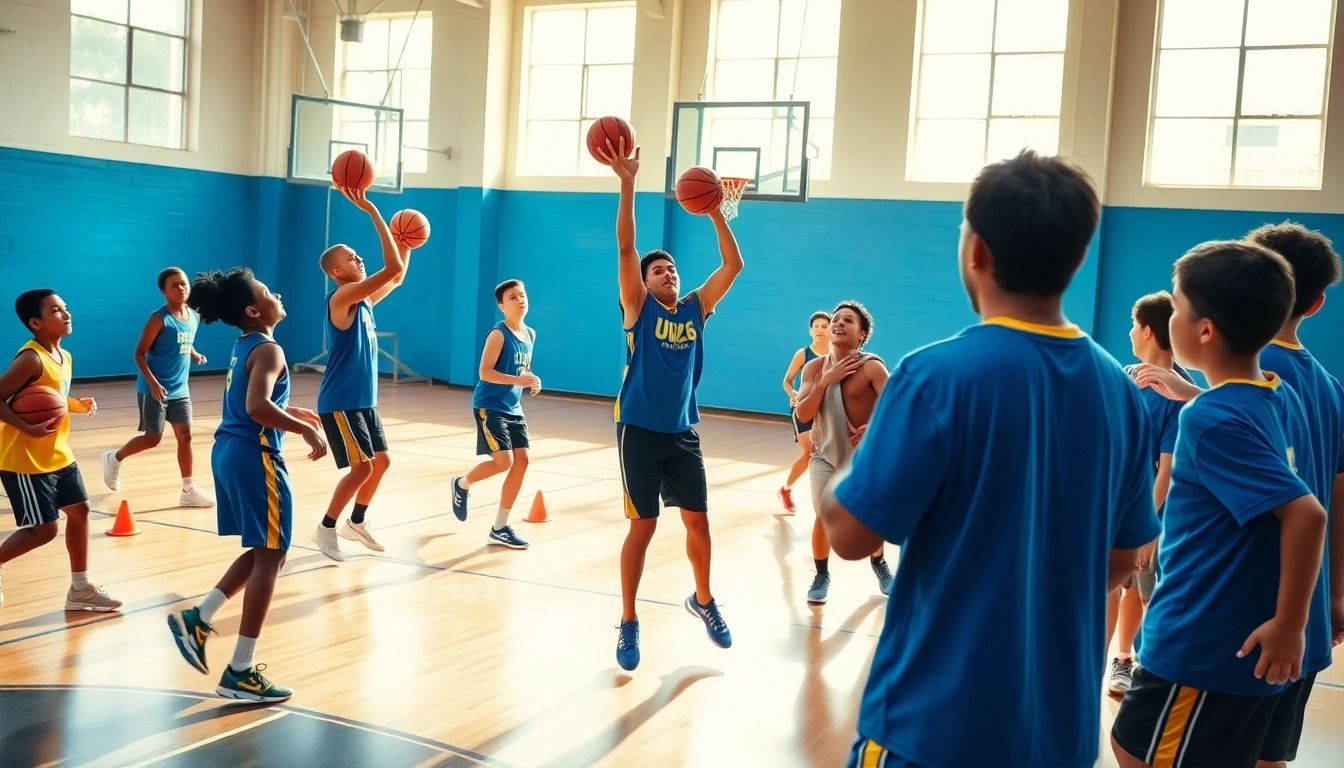1. Why Engage Young Basketball Enthusiasts in Sport?
Basketball is more than just a game; it’s a vital part of youth development. For young basketball enthusiasts, playing the sport can drive significant growth in various areas of life. From providing physical fitness to instilling values like teamwork and discipline, the benefits are profound. Engaging in basketball at a young age sets a foundation that can lead to a lifetime of healthy habits.
1.1 The Importance of Early Sports Participation
Studies show that early participation in sports positively affects children’s health, both mentally and physically. Engaging in basketball before adolescence helps youngsters develop unique motor skills and enhances their coordination. As they learn the basic principles of the game, like dribbling, passing, and shooting, they not only improve their athleticism but also strengthen their self-esteem.
Psychologically, the earlier a child engages in organized sports, the more likely they are to carry forward a positive outlook on teamwork and competition. Additionally, playing sports often leads to increased academic performance, as children learn the discipline and focus required to succeed both on and off the court.
1.2 Skills Development Through Basketball
Basketball offers a unique platform for skill development. The game’s multifaceted nature encourages the growth of both hard skills (technical abilities) and soft skills (social interactions, communication). For example, dribbling develops hand-eye coordination, while shooting practices precision and focus.
Moreover, young players develop critical tactical understanding by learning offensive and defensive formations. This strategic thinking is not limited to the court; it can also enhance decision-making skills in academic and personal contexts. Kids learn to read situations, which is crucial both in sports and life.
1.3 Building Social Connections on the Court
Basketball naturally facilitates social interactions. Through team practices and games, young players create bonds with their teammates, coaches, and opponents. These relationships can lead to lasting friendships and a sense of community that helps instill a feeling of belonging among young athletes.
Social connections formed on the court can be pivotal during challenging times. The support system of teammates motivates players to push through the ups and downs of sports, teaching resilience that extends beyond basketball. The sport becomes a common ground where young enthusiasts share experiences, fostering teamwork and camaraderie.
2. Fun Drills for Young Basketball Enthusiasts
Skill development shouldn’t feel like a chore; creating a fun atmosphere around drills encourages young players to hone their skills while enjoying the process. Here, we will outline several fun drills tailored specifically for young basketball enthusiasts that aim to improve their fundamentals.
2.1 Dribbling Drills to Enhance Control
Mastering dribbling is essential for any young basketball player. One effective drill is the “Cone Dribble.” Set up cones in a straight line about one meter apart. Players will dribble through the cones, using both hands, focusing on control and speed. This activity can be made competitive by timing players or setting up relays.
Another engaging drill is a “Partner Dribble.” Players pair up, with one dribbling while the other tries to poke the ball away. This not only builds dribbling skills but also helps players maintain composure under pressure. It’s crucial for young players to learn to protect the ball and make quick decisions during a game.
2.2 Shooting Techniques for Young Players
To improve shooting, the “Spot Shooting” drill is fundamental. Place marks around the key area and have players shoot from different spots. They can keep score to make it more competitive and entertaining. This not only refines shooting accuracy but also helps players learn the importance of foot placement and shooting rhythm.
Another engaging exercise is the “Horse” game, which is more relaxed yet effective. Players take turns shooting from different spots; if a player makes a basket, the challenger must replicate the shot. If they miss, they earn a letter, and the first to spell “H-O-R-S-E” loses. This game encourages creativity in shot selection while practicing shooting under pressure.
2.3 Passing Drills for Team Play
Effective passing is essential for teamwork and maximizes scoring opportunities. A fun drill to enhance passing skills is the “Pass and Move” drill. Players form two lines facing each other. They pass the ball to the opposite line and must immediately move to receive a return pass. This fosters quick thinking and decision-making.
The “Four Corners” drill is another excellent exercise. Assign each player to a corner and call out numbers, directing the players to pass to their designated corners. This drill sharpens their passing abilities under pressure while incorporating movement, making it an enjoyable way to enhance teamwork.
3. Inspirational Stories from Young Basketball Enthusiasts
The world of basketball is filled with heartwarming stories of young players who faced adversity and found solace, purpose, and success through the sport. By learning about these individuals, aspiring athletes can draw motivation and resilience from their journeys.
3.1 How Youth Players Overcame Challenges
Consider the story of a young enthusiast, Jamie, who suffered a severe leg injury that sidelined him for almost a year. Rather than give up on his basketball dreams, Jamie focused on rehabilitation and learned about game strategy while unable to play. His perseverance not only got him back on the court but also improved his understanding of team dynamics and strategy, making him a better player upon his return.
There’s also Alex, who struggled academically. His love for basketball became a catalyst for improvement in his grades. Motivated to play at higher levels, he found that commitment to his education was rewarded with increased opportunities and scholarships, emphasizing that sports can lead to holistic growth.
3.2 Profiles of Star Players Who Started Young
Star players often share inspirational backgrounds that begin at an early age. For example, NBA superstar LeBron James started playing basketball at the tender age of 9, quickly showing promise. His story is a reminder that early engagement, guidance, and hard work can pave the way for future star athletes.
Similarly, Kobe Bryant was only 6 years old when he first picked up a basketball. His relentless work ethic and determination to excel highlight the importance of dedication from one’s youth. These profiles serve as motivation for young basketball enthusiasts to cultivate their skills, reminding them that they, too, can achieve greatness.
3.3 Motivation Through Mentorship Programs
Mentorship is crucial for young players. Numerous programs across the country connect aspiring athletes with former professional players, coaches, and community leaders. These opportunities allow children to receive personalized feedback, build resilience, and gain insights that can guide them both on and off the court.
For example, programs organized by the NBA emphasize not only skill development but also life skills. Mentors share their experiences, encouraging players to navigate life’s challenges productively. These relationships can have a profound impact, fostering growth and ambition in young enthusiasts.
4. Creating a Supportive Community for Young Basketball Enthusiasts
A thriving basketball community can dramatically influence the development of young players. From coaches’ strategies to neighborly support, the environment surrounding young athletes is as crucial as their individual talent.
4.1 Finding Local Basketball Programs
Identifying and enrolling in local basketball programs is the first step for young enthusiasts. Community centers, schools, and local leagues often host youth basketball programs that cater to various skill levels. Parents can research through local sports clubs or inquire at schools to find available options.
Additionally, many organizations offer summer basketball camps that emphasize skill development and teamwork, allowing kids to learn from experienced coaches and meet peers who share their passion for the game.
4.2 Building Parent Engagement in Youth Sports
Parental involvement is vital in fostering a healthy sports culture. Parents who show enthusiasm for their children’s participation in basketball can help motivate and encourage their kids. They can support their children’s engagement by attending games, and volunteering for coaching or organizing events, which can enhance community spirit and cohesion.
Moreover, parent meetings can serve as platforms for discussing child development and sportsmanship, ensuring everyone shares a common understanding of expectations and goals.
4.3 Collaborating with Coaches for Better Outcomes
Coaches play a pivotal role in youth basketball. They shape athletes’ experiences, techniques, and attitudes towards the game. Building collaborative relationships between parents and coaches can significantly improve young players’ outcomes. Open communication about players’ progress, needs, and aspirations ensures that everyone works collectively towards their development.
Coaches should be approachable and ideally include feedback from parents about their children’s performance and well-being. It creates an inclusive environment where athletes can thrive both as players and as individuals.
5. Gear and Resources for Young Basketball Enthusiasts
Equipping young players with the right gear and resources is crucial for their development and enjoyment of the game. The right equipment can enhance performance and help prevent injury.
5.1 Selecting the Right Basketball Equipment
Choosing the appropriate basketball is essential for young players. Size matters; younger players should use lighter, smaller balls designed for their age group to improve skills without becoming discouraged. Additionally, supportive footwear cannot be overlooked. Shoes should provide adequate cushioning and stability to prevent injuries during play.
Other necessary gear includes practice jerseys, knee pads, and water bottles to keep young players hydrated and comfortable while they hone their skills on the court.
5.2 Recommended Books and Educational Material
Books can significantly contribute to a young basketball enthusiast’s understanding and love for the game. Titles like “Basketball for Kids: Skills, Drills, and Strategies” introduce key concepts in a fun, engaging way. Additionally, biographies of basketball legends can inspire young players to chase their dreams. Resources like “The Basketball Book” provide foundational knowledge on skills, drills, and history crucial for budding athletes.
Parents and coaches can use these educational materials to foster discussions about skill enhancement and the mental aspects of playing sports.
5.3 Online Resources for Skill Enhancement
The digital age has ushered in a wealth of information available at our fingertips. Websites and platforms such as YouTube offer tutorials and drills from experienced coaches and players. Websites dedicated to young athletes provide tips, training regimens, and competitions to maintain excitement and engagement.
Moreover, online forums and social media groups connect young players, coaches, and parents. They offer communities where knowledge and experiences are shared, promoting collective learning and growth in the sport.












Leave a Reply